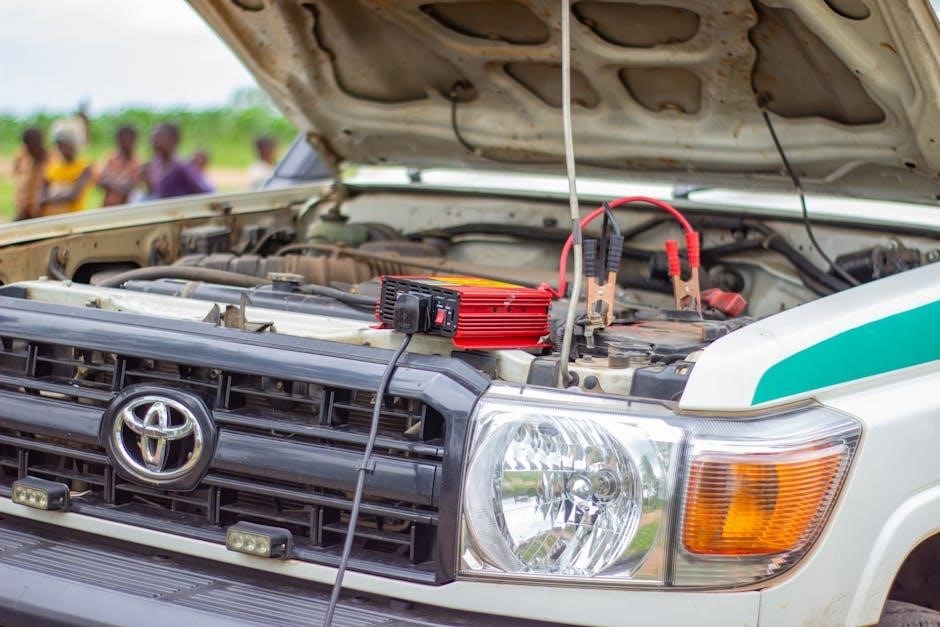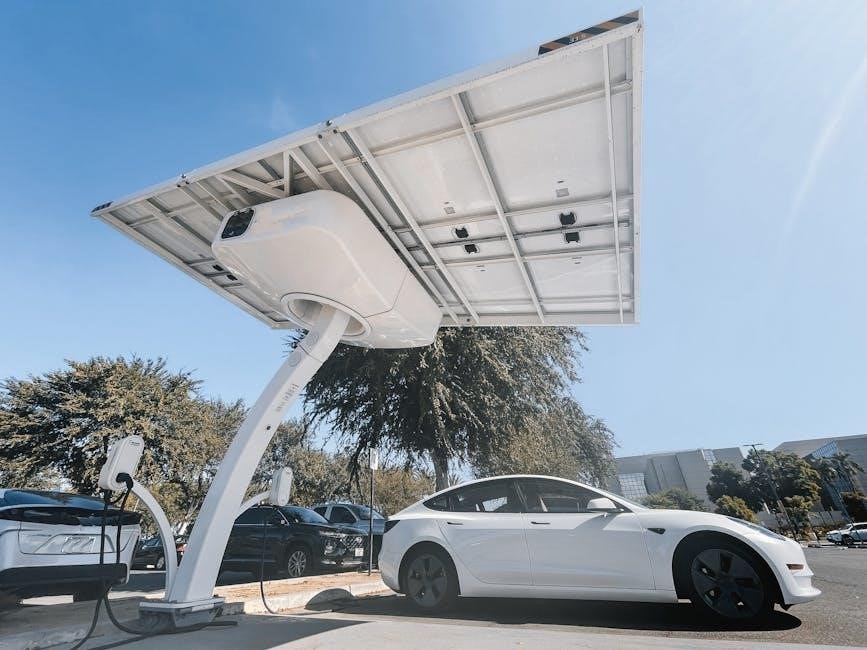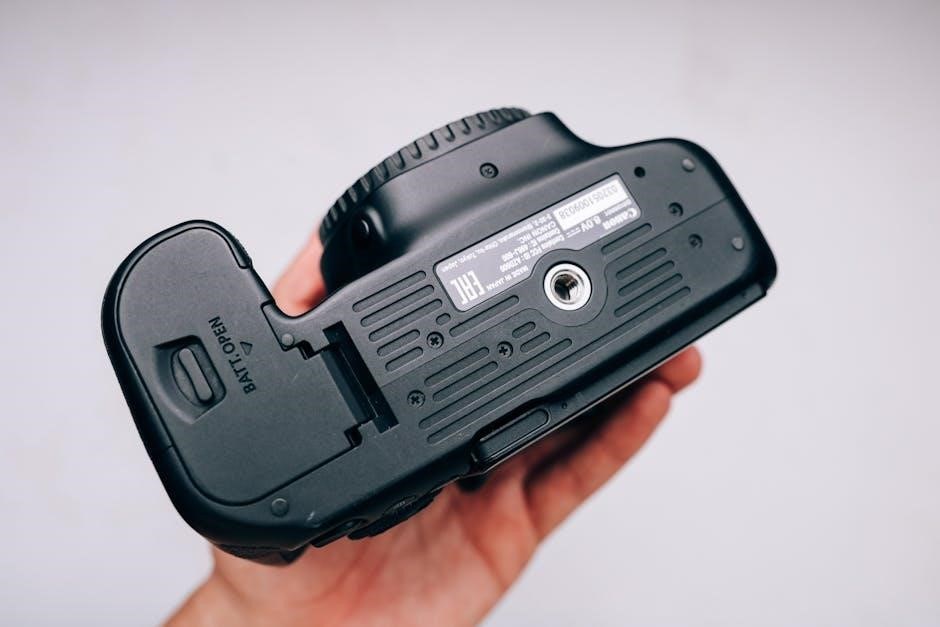Carlyle Battery Charger Manual: An Overview
The Carlyle battery charger manual provides essential guidance for safe and effective use. It covers various models and functionalities, ensuring optimal battery charging and maintenance. Familiarizing yourself with the manual is crucial before operating the charger.
Understanding Carlyle Battery Charger Models
Carlyle offers diverse battery charger models, each designed for specific battery types and charging needs. Understanding the differences between these models ensures you select the appropriate charger for your application and battery requirements.
Identifying Your Specific Carlyle Charger Model
Locating the model number on your Carlyle battery charger is crucial for accessing the correct manual and specifications. Typically, the model number is printed on a label affixed to the charger’s housing. This label often includes other important details such as voltage, amperage, and safety certifications.
Once you’ve identified the model number, cross-reference it with available online resources or the NAPA Auto Parts website to confirm compatibility with your battery type. The manual will provide tailored instructions specific to your charger. Correct identification is vital for proper operation and preventing damage.
Safety Precautions When Using a Carlyle Battery Charger
Prioritize safety by reading the manual thoroughly. Always wear eye protection, ensure proper ventilation, and avoid sparks near batteries. Mishandling can lead to explosions or injury, so follow instructions carefully.
Handling Lead-Acid Batteries and Explosive Gases
Lead-acid batteries produce explosive hydrogen gas during charging. Therefore, never smoke, use open flames, or create sparks near a battery being charged. Ensure the charging area is well-ventilated to prevent gas accumulation. Disconnect the charger from the power source before connecting or disconnecting the battery clamps.
Always connect the positive clamp to the positive terminal and the negative clamp to the negative terminal. If connecting to a battery still in a vehicle, consult the vehicle’s manual for proper grounding procedures. Improper connections or lack of ventilation can lead to dangerous explosions. Remember, safety is paramount when handling lead-acid batteries.
Eye Protection and Ventilation Requirements
Always wear appropriate eye protection, such as safety glasses or goggles, when working around batteries. Batteries can splash corrosive acid, posing a serious risk to your eyes. In case of acid contact, immediately flush your eyes with copious amounts of water and seek medical attention.
Adequate ventilation is also critical when charging batteries. Explosive gases released during charging can accumulate in enclosed spaces, creating a fire or explosion hazard. Ensure the charging area is well-ventilated, preferably outdoors or in a garage with open doors and windows. Insufficient ventilation can lead to dangerous concentrations of flammable gases. Prioritize your safety by adhering to these precautions.

Operating Instructions for Carlyle Battery Chargers
This section provides detailed instructions on how to properly operate Carlyle battery chargers. It covers setup, connections, charging modes, and specific battery types, ensuring safe and efficient charging practices.
Initial Setup and Connections
Before commencing the charging process with your Carlyle battery charger, ensure you have thoroughly read the safety precautions outlined in the manual. Begin by selecting a well-ventilated area, away from flammable materials or potential sources of sparks. Next, carefully inspect the battery and charger for any signs of damage, such as frayed cables or cracked housings. Verify that the charger’s voltage setting matches the voltage of the battery you intend to charge (6V, 12V, or 24V, depending on the model).
Connect the charger’s positive (red) clamp to the battery’s positive terminal and the negative (black) clamp to the negative terminal, ensuring a secure and firm connection. If charging a battery installed in a vehicle, consult the vehicle’s owner’s manual for specific instructions on grounding the negative clamp away from the battery. Finally, plug the charger into a grounded electrical outlet, and you are now ready to proceed with the charging process, following the charger’s operational guidelines.
Charging Different Battery Types (Flooded, AGM, etc.)
Carlyle battery chargers are designed to accommodate various battery types, including flooded lead-acid, AGM (Absorbent Glass Mat), and gel batteries. Selecting the correct charging mode is crucial for optimal battery health and longevity. Flooded batteries typically require a standard charging voltage, while AGM batteries often benefit from a slightly lower voltage to prevent overcharging. Gel batteries are even more sensitive and require a specialized, gentle charging mode.
Consult your Carlyle charger’s manual to identify the appropriate settings for your specific battery type. Some chargers feature automatic detection and selection, while others require manual adjustment. Incorrect settings can lead to reduced battery life, damage, or even hazardous situations. Always prioritize safety and accuracy when charging different battery types to ensure optimal performance and prevent potential problems.

Troubleshooting Common Issues
This section addresses common problems encountered while using Carlyle battery chargers. It provides potential solutions for issues like the charger not powering on or the battery failing to charge properly.
Charger Not Powering On
If your Carlyle battery charger fails to power on, begin by verifying the power cord is securely connected to both the charger and a functioning electrical outlet. Check the outlet using another device to confirm it’s providing power. Examine the charger’s fuse for any signs of damage or burnout and replace if necessary, ensuring you use the correct amperage rating.
Inspect the power cord itself for any cuts, frays, or exposed wires, as these can prevent the charger from receiving power. If the cord is damaged, it should be replaced by a qualified technician. Try using a different outlet.
Battery Not Charging
If your Carlyle battery charger indicates it is on, but the battery isn’t charging, first ensure the charger clamps are securely and correctly connected to the battery terminals, paying attention to polarity. Verify that the battery type selected on the charger matches the type of battery you are attempting to charge (Flooded, AGM, Gel, etc.). Check the battery’s voltage; if it’s too low, the charger might not recognize it.
Some chargers have a minimum voltage requirement. A deeply discharged battery may require a manual or boost mode if available. Ensure the battery terminals are free from corrosion, as this can impede charge flow.
Maintenance and Storage
Proper maintenance and storage are vital for extending the life of your Carlyle battery charger. Regular cleaning and storing in appropriate conditions will prevent damage and ensure reliable performance when needed.
Proper Cleaning Procedures
To ensure the longevity and optimal performance of your Carlyle battery charger, adhering to proper cleaning procedures is essential. Before initiating any cleaning, always disconnect the charger from the power source to prevent electrical hazards. Use a soft, dry cloth to wipe down the exterior surfaces of the charger, removing any dust, dirt, or grime. For stubborn stains or residue, slightly dampen the cloth with a mild detergent solution, ensuring to avoid any liquid entering the charger’s internal components. Thoroughly dry all surfaces after cleaning. Periodically inspect the charging cables and clamps for any signs of damage or corrosion, cleaning them as needed. Regular cleaning not only maintains the charger’s appearance but also prevents potential malfunctions caused by accumulated debris.
Optimal Storage Conditions
To maximize the lifespan and operational readiness of your Carlyle battery charger, proper storage is paramount. Always disconnect the charger from both the power outlet and the battery before storing it. Choose a cool, dry, and well-ventilated environment, away from direct sunlight, extreme temperatures, and humidity. Avoid storing the charger in areas where it may be exposed to corrosive substances or flammable materials. Neatly coil the charging cables and secure them to prevent tangling or damage. Store the charger in its original packaging or a protective case to shield it from dust and physical impacts. Regularly inspect the charger during storage to ensure no signs of deterioration or damage. By adhering to these optimal storage conditions, you can confidently maintain your Carlyle battery charger’s performance for years to come.

Where to Find Carlyle Battery Charger Manuals
Carlyle battery charger manuals can be found through online resources and databases. Check the NAPA Auto Parts website or refer to the manufacturer’s official webpage for downloadable PDFs.
Online Resources and Databases
Finding your Carlyle battery charger manual online is straightforward. Start with the official NAPA Auto Parts website, as they are a primary distributor of Carlyle products. Many manuals are available for direct download in PDF format. You can also explore online databases specializing in user manuals, such as ManualsLib or All-Guides Database.
Additionally, searching the model number of your charger on general search engines like Google can often lead you to relevant manuals or forum discussions where users may have shared copies. Remember to verify the authenticity of any downloaded manual to ensure it matches your specific Carlyle charger model for accurate instructions.

NAPA’s Role in Carlyle Battery Chargers
NAPA Auto Parts is a key distributor of Carlyle battery chargers. They offer a wide selection and provide access to manuals, ensuring customers can find the right charger and information.
Purchasing Carlyle Chargers from NAPA
NAPA Auto Parts stores and their online platform offer a convenient way to purchase Carlyle battery chargers. Customers can browse a variety of models, comparing features and prices to find the best fit for their needs. NAPA provides access to product specifications, customer reviews, and compatibility information, aiding in informed decision-making.
Purchasing from NAPA ensures access to genuine Carlyle products and reliable customer support. NAPA staff can assist with selecting the appropriate charger for specific battery types and vehicle requirements. Additionally, NAPA often provides warranty and return options, offering peace of mind with your purchase, and is also helpful with troubleshooting if you need guidance.